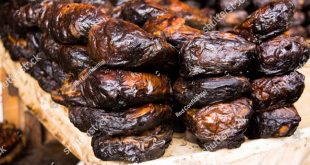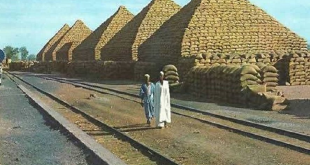
Honey is delicious and nutritious; there’s no doubt about it! The thing that makes honey really amazing is how it’s made. Many of us take honey for granted. We can simply go to the store and pick up some delicious local honey to enjoy. We rarely think about all of the time that went into the production of honey.
Bees are smart and practical. The lives of honeybees are dedicated to supporting the colony. Every bee has a job, and that job needs to get done so the colony can thrive. During the spring and summer, worker bees are busy collecting nectar and pollen so they can make stores of honey for the winter. Honeybees make as much honey as they can during the warmer months so that they can support the colony in the “offseason.” Honey is also used to feed the young. New honeybees eat the nectar and pollen, so they are strong and ready to work once the springtime hits.

How Do Bees Make Honey?
The production of honey is a multi-step process, as you can imagine. Let’s follow the honeybees step-by-step as they make this precious food for the colony.

Step 1: Worker bees collect nectar.
When the worker bee has found a good source of nectar, she gets to work! Using her proboscis, she sucks up nectar from the inside of flowers, often visiting more than 100 flowers on one foraging trip.
The nectar, along with a little bit of honeybee saliva, is stored in a special sac called a honey stomach. Once the honey stomach is full, the worker bee will return to the hive to drop off the load.
Step 2: Worker bees pass the nectar to house bees.
Back at the hive, bees known as house bees wait for the foragers to return. The worker bees pass the nectar to the waiting bees so they can really start the honey-making process. As the nectar is chewed and passed from bee to bee, enzymes change its Ph and other chemical properties.
At this stage, the nectar and enzyme mixture contain too much water to be stored over the winter. The bees must work on drying it out.
Step 3: The bees dehydrate the honey.
Some water is removed from the honey while it is passed from bee to bee. But bees use two other methods for drying out the honey. For one, they will spread the honey over the honeycomb. This process increases the surface area and allows for more water evaporation.
Bees will also fan their wings near the honey to increase airflow and evaporate even more liquid. Eventually, the honey will have a water content of about 17-20%, down from a whopping 70%. The bees really do work for their food!
Step 4: The bees cap the honeycomb with beeswax.
The final step in the honey-making process is storage. The honey is deposited into the cells of the honeycomb, where it will stay until the bees are ready to eat it. To keep the honey fresh, each cell is capped with beeswax. Making beeswax is another fascinating process. Learn more about beeswax and how bees make it: What is Beeswax?
So to recap. From bee…
Honey starts as flower nectar collected by bees, which gets broken down into simple sugars stored inside the honeycomb. The design of the honeycomb and constant fanning of the bees’ wings causes evaporation, creating sweet liquid honey. Honey’s colour and flavour varies based on the nectar collected by the bees. For example, honey made from clover blossom nectar might be light in colour, whereas honey from Manuka might have a dark amber colour.
…to hive and beekeeper…
On average, a hive will produce about 30 kgs of surplus honey each year. Beekeepers harvest it by collecting the honeycomb frames and scraping off the wax cap that bees make to seal off honey in each cell. Once the caps are removed, the frames are placed in an extractor, a centrifuge that spins the frames, forcing honey out of the comb.
…to your Home
After the honey is extracted, it’s strained to remove any remaining wax and other particles.
After straining, it’s time to bottle, label and bring it to you. At Te Kapu Apiaries we have moved away from plastics and now bottle our 100% natural honey in recyclable glass jars. We then ship the honey to our selected retailers or deliver it straight to your door when you order online through our website. From hive to beekeeper, our family to yours.
 MMS PLUS NG – Maritime, Aviation, Business, Oil and Gas News Online Newspaper with coverage in Maritime, Oil and Gas, Aviation, Power and Energy as well as Financial News
MMS PLUS NG – Maritime, Aviation, Business, Oil and Gas News Online Newspaper with coverage in Maritime, Oil and Gas, Aviation, Power and Energy as well as Financial News









